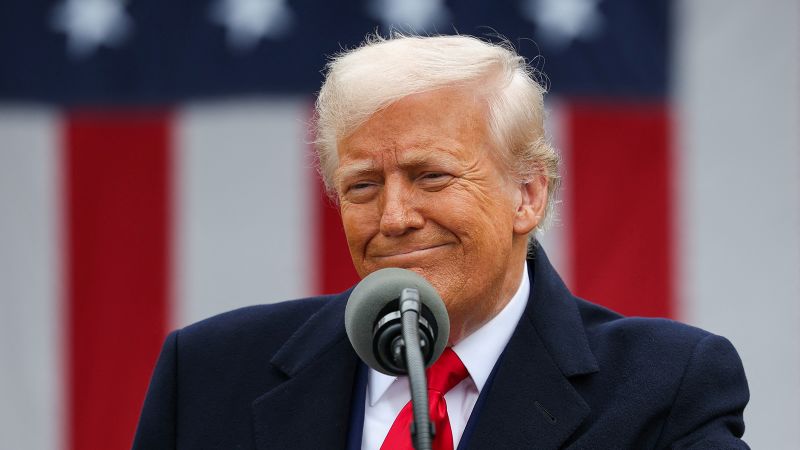CNN
—
The massive tariffs that President Donald Trump announced for dozens of trading partners Wednesday were pitched as “reciprocal,” simply aiming to match the tariffs other countries charge the United States.
But the methodology behind Trump’s attempt to rebalance trade has nothing to do with the tariff rate that foreign countries impose on the US.
The Trump administration instead a grossly oversimplified calculation that it said factored in a broad set of issues such as Chinese investment, alleged currency manipulation and other countries’ regulations. The administration’s calculation divided a country’s trade deficit with the US by its exports into the country times 1/2. That’s it.
The president is essentially taking a sledgehammer to address a litany of grievances, using the trade deficit that other countries have with the US as a scapegoat. And the vague calculation could have broad implications for countries America depends on for goods — and the foreign companies that supply them.
“There does not appear to have been any tariffs used in the calculation of the rate,” said Mike O’Rourke, chief marketing strategist at Jones Trading, in a note to investors Wednesday. “The Trump administration is specifically targeting nations with large trade surpluses with the United States relative to their exports to the United States.”
The actual figures are probably closer to the “average Most-Favored-Nation (MFN) applied tariff rate,” which is essentially a ceiling of import taxes that more than 160 nations of the World Trade Organization have agreed to charge each other, though they can vary by sector. And for countries with trade agreements in place, there could be lower or no tariffs at all.
Trump has frequently said his trade policy is rooted in one simple motto: “They charge us, we charge them.” It turns out it’s not that simple.
“A lot of the issues that the administration highlighted, that they’re concerned about, are not really with tariff rates,” Sarah Bianchi, chief strategist of international political affairs and public policy at Evercore ISI, said Thursday during a panel discussion hosted by the Brookings Institution.
The MFN tariff rates were born out of negotiations among WTO members in the 1990s, when the organization was first founded.
The European Union’s MFN rate is 5%, but the Trump administration said it’s more like 20% because “US exports suffer from the uneven and inconsistent” customs rules across the currency zone and because “EU-level institutions do not provide transparency in decision-making,” the US Trade Representative’s office said.
Meanwhile, Vietnam’s MFN tariff rate is 9.4%, as of the latest data from 2023, but the Trump administration chalked it up to 46% because of non-trade barriers, according to a report from the USTR’s office released this week. Non-trade barriers can include import quotas and anti-dumping laws that are aimed at protecting domestic industries.
Vietnam’s top trade official on Thursday called Trump’s new tariff on the country “unfair,” pointing to the MFN rate.
India and China also have some non-trade barriers, noted Sung Won Sohn, professor of finance and economics at Loyola Marymount University and chief economist at SS Economics. For example, India has sanitary measures for agricultural imports and China has state subsidies favoring domestic companies, he wrote in commentary issued earlier this year.
But “Liberation Day” was still not the right approach to addressing non-tariff measures from other countries, said Joe Brusuelas, chief economist at markets insight firm RSM, told CNN in an interview.
“If you look at the formula the White House put forward for how they established the new tariff levels, they had nothing to do with non-tariff barriers,” he said, adding: “It looked to me as if it was an ad hoc effort of punishing countries because they had large trade balances with the United States.”
That bilateral trade balance the US runs with other countries, he said, is “simply a function of saving and spending in the United States.”
On a call with reporters Wednesday, a senior White House official referred to the deficits as a national emergency that must be addressed to retain factories and jobs in the US.
But is it a terrible thing that countries run such deficits with the US? Not necessarily.
Many countries run a trade deficit with the US, according to trade data. The United States runs $230 billion more in imports than exports to the EU, and nearly $300 billion more to China.
“When I go to the store and buy groceries with cash, I run a trade deficit with my grocery store, but does that mean that I’m worse off? Obviously not,” John Dove, an economics professor at Troy University, told CNN. “Those are goods that I want, and I don’t need to provide a reciprocal good or service in return. That’s not necessarily a good or a bad thing. It just is.”
Still, the Trump administration has pointed to tariffs aimed at fixing trade deficits as a potential source of government revenue to pay down the national debt and fund tax cuts. But that’s a risky gamble that could prove disastrous if countries band together to retaliate.
“The more concerning issue is that these large across-the-board tariffs incentivize our trading partners to retaliate against us,” Dove said.
If other countries renegotiate their own trade policies, the US “could very quickly end up in a situation where you have 25% of the world economy up against the other 75%,” he said, “and I can tell you who’s going to come out ahead there.”

